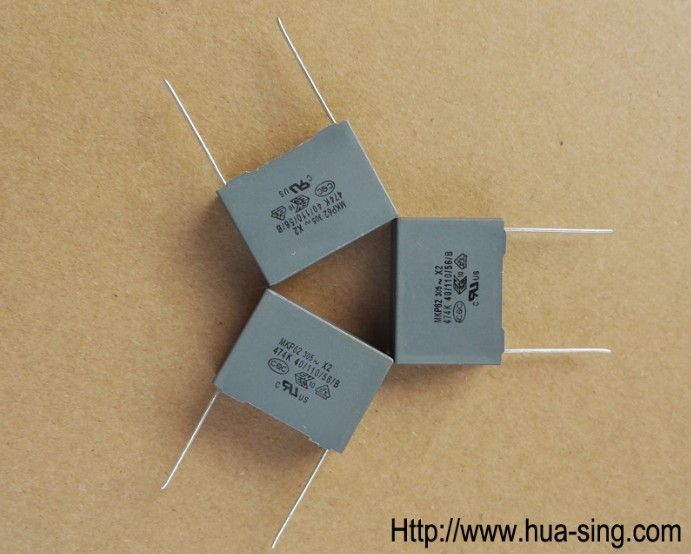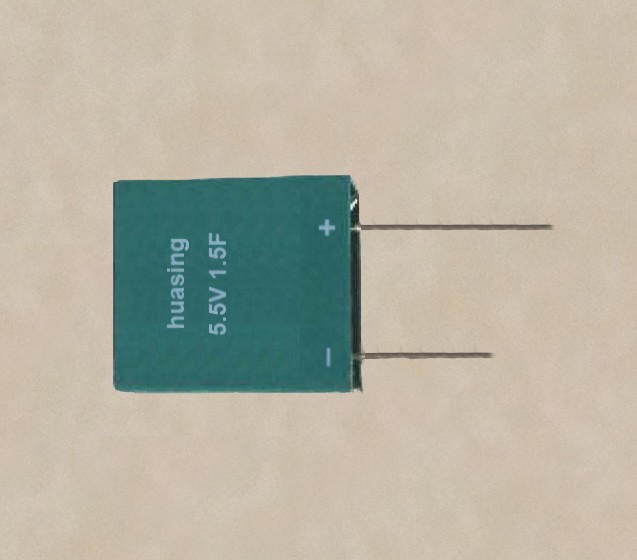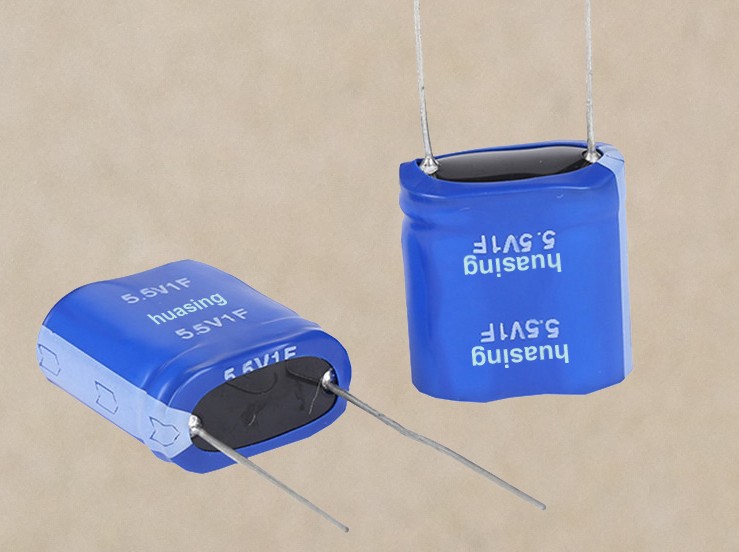Characteristics and uses of ceramic capacitor
3/9/2017 8:02:31 PM
1. Characteristics and uses of ceramic capacitors
Ceramic capacitors belong to the family of electrostatic capacitors. They have the following characteristics: Non-Polar, stability, high insulation resistance, small size, long life. With the advances in materials and manufacturing technology in recent years, the development of high voltage ceramic capacitors have made considerable progress, and achieved widespread application. High voltage ceramic capacitors has become an indispensable component of high-power high-voltage electronic products.
Ceramic dielectric materials can be formulated with a wide range of characteristics. The EIA standard for ceramic dielectric capacitors (RS-1988) divides ceramic dielectrics into the following classes:
Class I: Temperature compensating capacitors,Suitable for resonant circuit application or other applications where high Q and stability of capacitance characteristics are required. Class I capacitors have predictable temperature coefficients and are not affected by voltage, frequency or time. They are made from materials which are not ferroelectric, yielding superior stability but low volumetric efficiency. Class I capacitors are the most stable type available, but have the lowest volumetric efficiency.
Class II Stable capacitors: suitable for bypass or coupling applications or frequency discriminating circuits where Q and stability of capacitance characteristics are not of major importance. Class II stable capacitors have temperature characteristics of ± 15% or less. They are made from materials which are ferroelectric, yielding higher volumetric efficiency but less stability. Class II stable capacitors are affected by temperature, voltage, frequency and time. When the voltage increases, the capacitance decreased.
Class II General purpose capacitors: suitable for by-pass coupling or other applications in which dielectric losses, high insulation resistance and stability of capacitance characteristics are of little or no importance. Class II General purpose capacitors are similar to Class II stable capacitors except for temperature characteristics,which are greater than ± 15%. Class II General purpose capacitors have the highest volumetric efficiency and poorest stability of any type.
High voltage ceramic capacitors are used in the circuit has a high peak current and high repetition rate.Such as high voltage cascade circuit, high voltage divider circuit, sub-voltage protection, the decoupling circuit, laser excitation, switching circuits, welding equipment, the AC current limiting, DC energy storage, high-frequency coupling, AC, DC filter occasions.
2. Classification and characteristics of common ceramic capacitor dielectric
Common used ceramic capacitor material Class I ceramics:NPO, P100,UJ,SL,N2200,N3300,N4700 and so on, such ceramic temperature coefficient is determined, the relationship between the capacitance and the temperature is a linear, N for negative temperature coefficient, P for positive temperature coefficient. The relationship of capacitance and temperature as shown in Figure 2-2.
Class II ceramic: X7E,X7F, X7R, Y5S,Y5T, Y5U, Y5V, Z5U. For Class II ceramic temperature coefficient is non-linear, Class II ceramic dielectric named as shown in Figure 2-1, the first letter represents the minimum working temperature, X=-55°C,Y= -30°C,Z= +10°C, the second letter represents the maximum operating temperature, 5=+85°C,6=+105°C, 7=+125°C, 8=+150°C,the third letter represents the dielectric temperature characteristic, represents the maximum capacitance variation in working temperature range, the E=5%,F=±7.5%,P=±10%,R=±15%,S=±22%,T=+22%~-33%, U=+22%~-56%,V=+22%~-82%.
C0G (NP0): It is the most popular single ceramic capacitor with temperature-compensating, C0G (NP0) formulations contain neodymium, samarium and other rare earth oxides.C0G (NP0) ceramics offer one of the most stable capacitor dielectrics available. Capacitance change with temperature is ±30ppm/°C which is less than ±0.3% ∆ C from -55°C to +125°C. Capacitance drift and hysteresis for C0G (NP0) ceramics is negligible at less than ±0.05% versus up to±2% for films. Typical capacitance change with capacitors’ life is less than ±0.1% for C0G (NP0), one-fifth that shown by most other dielectrics. The aging characteristics of C0G (NP0) is negligible.The C0G (NP0) formulation “Q” over 1000 and the change of capacitance and “Q” is few with frequency.
UJ is a performance slightly worse than the NPO material high-frequency capacitance, the stability of capacitance and dissipation factor, the use temperature range is smaller than the NPO, the capacitance change in temperature from -25°C to +85°C the capacitance change in temperature from -25°C to +85°C ±520ppm /°C, dissipation factor is less than 0.06%, insulation resistance greater than 100000MΩ.
SL is similar to the UJ material high-frequency capacitance,the stability of capacitance and dissipation factor, the use temperature range is smaller than the NPO, the capacitance change ±650ppm/°C in temperature from -25°C to +85°C the capacitance change dissipation factor is less than 0.06%, insulation resistance greater than 100000MΩ.

Figure 2-2 Capacitance change vs Temperature

Figure 2-3 Capacitance change vs Temperature

Figure 2-4 Class I Capacitance change vs Frequency Figure 2-5 Class I Capacitance change vs voltage
N4700 ceramic capacitor is successfully developed in recent years, a new type of ceramic, a ceramic material widely used in high-end products,compared to other Class I ceramic dielectric constant large, suitable for larger capacitance, resistance higher voltage, dissipation factor less than 0.2%, much lower than the average class II ceramic; insulation resistance is greater than 200000MΩ, better frequency and characteristics of the temperature coefficient, withstand greater current, Its temperature variation of capacitance is within ±28% from -25°C to +85°C, it is life of more than 10 years.
X7E formulations are called “temperature stable” ceramics and fall into EIA Class II materials. It is the Huasing electronics designed for the design of power divider dedicated capacitance Its temperature variation of capacitance is within ±2.5% from -25°C to +85°C, within ±5% from -55°C to +125°C.Dissipation factor is less than 1.5%.

Figure 2-6 X7E,X7F Capacitance change vs Temperature
X7F formulations are called “temperature stable” ceramics and fall into EIA Class II materials. Its temperature variation of capacitance is within ±10% from -55°C to +125°C. This capacitance change is non-linear.Capacitance for X7F varies under the influence of electrical operating conditions such as voltage and frequency.X7F dielectric chip usage covers the broad spectrum of industrial applications where known changes in capacitance due to applied voltages are acceptable;dissipation factor is less than 1.5%.
X7R formulations are called “temperature stable” ceramics and fall into EIA Class II materials. X7R is the most popular of these intermediate dielectric constant materials. Its temperature variation of capacitance is within ±15% from -55°C to +125°C. This capacitance change is non-linear.Capacitance for X7R varies under the influence of electrical operating conditions such as voltage and frequency.X7R dielectric chip usage covers the broad spectrum of industrial applications where known changes in capacitance due to applied voltages are acceptable.
Y5P formulations are called “temperature stable” ceramics and fall into EIA Class II materials. Its temperature variation of capacitance is within ±10% from -30°C to +85°C.Y5P are similar to X7R except for temperature characteristics. Dissipation factor less than 1.5%, insulation resistance is greater than 100000MΩ.
Y5S is a better performance of Class II General Ceramics.Its temperature variation of capacitance is within +10/-22% from -25°C to +85°C. Dissipation factor is less than 0.2%, insulation resistance greater than 100000MΩ.
Y5T is a better performance of Class II General Ceramics.Its temperature variation of capacitance is within +22/-33% from -25°C to +85°C. Dissipation factor is less than 0.5%, insulation resistance greater than 100000MΩ.
Y5U formulations are “general-purpose” ceramics which are meant primarily for use in limited temperature applications where small size and cost are important. Its temperature variation of capacitance is within +22% -56% from -25°C to +85°C.Y5U show wide variations in capacitance under influence of environmental and electrical operating conditions.Despite their capacitance instability, Y5U formulations are very popular because of their small size, low ESL, low ESR and excellent frequency response. These features are particularly important for decoupling application where only a minimum capacitance value is required.
Y5V formulations are for general-purpose use in a limited temperature range. Y5V are similar to Y5U except for temperature characteristics They have a wide temperature characteristic of +22% –82% capacitance change over the operating temperature range of –25°C to +85°C.These characteristics make Y5V ideal for decoupling applications within limited temperature range.
|
NO. |
Ceramic Dielectric |
Operating temperature Range(°C) |
Insulation Resistance(≥MΩ) |
Dissipation Factor≤ |
Temperature characteristics |
|
1 |
UJ |
-25~+85 |
1000000 |
6×10-4 |
+/-520PPM/°C |
|
2 |
SL |
-25~+85 |
1000000 |
6×10-4 |
+/-650PPM/°C |
|
3 |
Y5P |
-25~+85 |
100000 |
1.5% |
+/-10% |
|
4 |
X7E(X7E) |
-55~125 |
100000 |
1.5% |
+/-5% |
|
5 |
X7F(X) |
-55~+125 |
100000 |
1.5% |
+/-10% |
|
6 |
X7R(X7R) |
-55~+125 |
100000 |
1.5% |
+/-15% |
|
7 |
N4700(DL) |
-25~+85 |
200000 |
0.2% |
+/-28% |
|
-25~+85 |
200000 |
0.2% |
+/-33% |
||
|
8 |
Y5S(S) |
-25~+85 |
100000 |
0.2% |
+10% -22% |
|
9 |
Y5T(D) |
-25~+85 |
100000 |
0.5% |
+22% -33% |
|
10 |
Y5U(E) |
-25~+85 |
10000 |
2% |
+22% -56% |
|
11 |
Y5V(F) |
-25~+85 |
10000 |
2% |
+22% -80% |
If you have any query on Super High Voltage Ceramic Capacitors, you can write email to us.
Email: sales @ hua-sing.com

 Tel:86 0513 65085106 Fax:86 0513 81164838
Tel:86 0513 65085106 Fax:86 0513 81164838 






